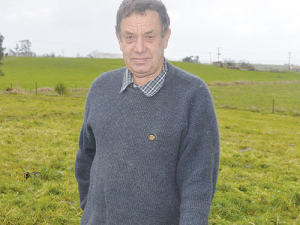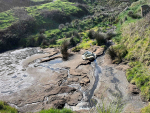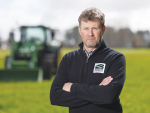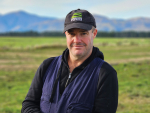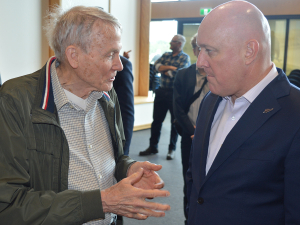A recent NZ Herald article indicated that collaboration over Waikato Regional Council’s Healthy Rivers/Wai Ora Plan Change 1 has cost ratepayers in the Waikato $14.8 million, to date.
This money has been used for research, stakeholder consultation groups, and council staff time.
But Plan Change 1 does not include all costs, for example money spent by industry groups and individuals, or the cost of stress on farmers as they are weighing up whether their business is still viable under Plan Change 1.
The original goal was to develop an inclusive and harmonious plan to restore and protect the Waikato River and its catchments. To help achieve this goal, the community was appointed the task of generating practical solutions, from which the Collaborative
Stakeholders Group (CSG) was formed. Five years down the track, Plan Change 1 has been developed but the original goal has not yet been achieved. There is considerable upset and disharmony throughout the region, and in governing bodies, as the realisation of Plan Change 1’s impacts become clear. The main concern is whether the potential environmental gain outweighs the definite social and economic loss. A report commissioned by and presented to the CSG, estimated the value lost to the Waikato’s regional economy to be $101 million, once Plan Change 1 is fully operative. Nationally, the value lost due to Plan Change 1 was estimated to be $212 million. It was also estimated that 1,198 jobs would be lost in the Waikato region and 2276 jobs lost nationally, once Plan Change 1 is fully operative. These estimates do not include the projected cost, of up to $880 million, to update present consented urban & industrial point source discharges.
Meanwhile, nitrate concentrations, which are heavily focussed upon in Plan Change 1, continue to trend downwards.
The latest report (released in January, 2017) indicates that mean nitrate concentration at the Waipapa Tailrace has reduced from 0.204 g/m³ in 2013 to 0.175 g/m³ in 2015.
At Mercer, it has reduced from 0.446 g/m³ to 0.375 g/m³. NIWA suggests,to achieve 99% protection of aquatic species in high-value conservation systems, nitrate concentrations must be less than 1.0 g/m³, and in moderately disturbed environments 2.4 g/m3 provides 95% protection.
Along the CSG process, it was decided to interpret the Waikato River Authority’s Vision and Strategy to mean the Waikato River and its catchments must be swimmable and fishable all seasons, instead of when it is safe.
This detail has generated an unrealistic and costly water quality goal. For example, the Waikato River, for the bulk of the summer, has met the guidelines for safe swimming.
Therefore, if the water quality goal was swimmable and fishable when the River was safe, it would mean we have already achieved a large proportion of this goal. Although media continue to present images of polluted waterways, the bulk of New Zealand rivers are in a better state than in the 1950s and 1960s when industrial, town and farm effluent waste was emptied into rivers as the fastest disposal route – the idea being dilution which then disappears out to sea.
It is pleasing to see the water quality indicators heading in the right direction. Farmers in the Waikato have spent, on average, $139,000 each because they could improve environmental performance. Latest data indicates this is having a positive effect on the environment.
Given the state of our Waikato River and its catchments, and the overall downward water quality trends, it seems Plan Change 1 is unnecessarily restrictive and limiting. The cost to the economy and society outweigh the potential benefit to the environment.
More research is required to provide the community with confidence that Plan Change 1 will make a significant environmental improvement, when what has already been done appears to be working.
• Peter Buckley is chairman of Primary Land Users Group.





